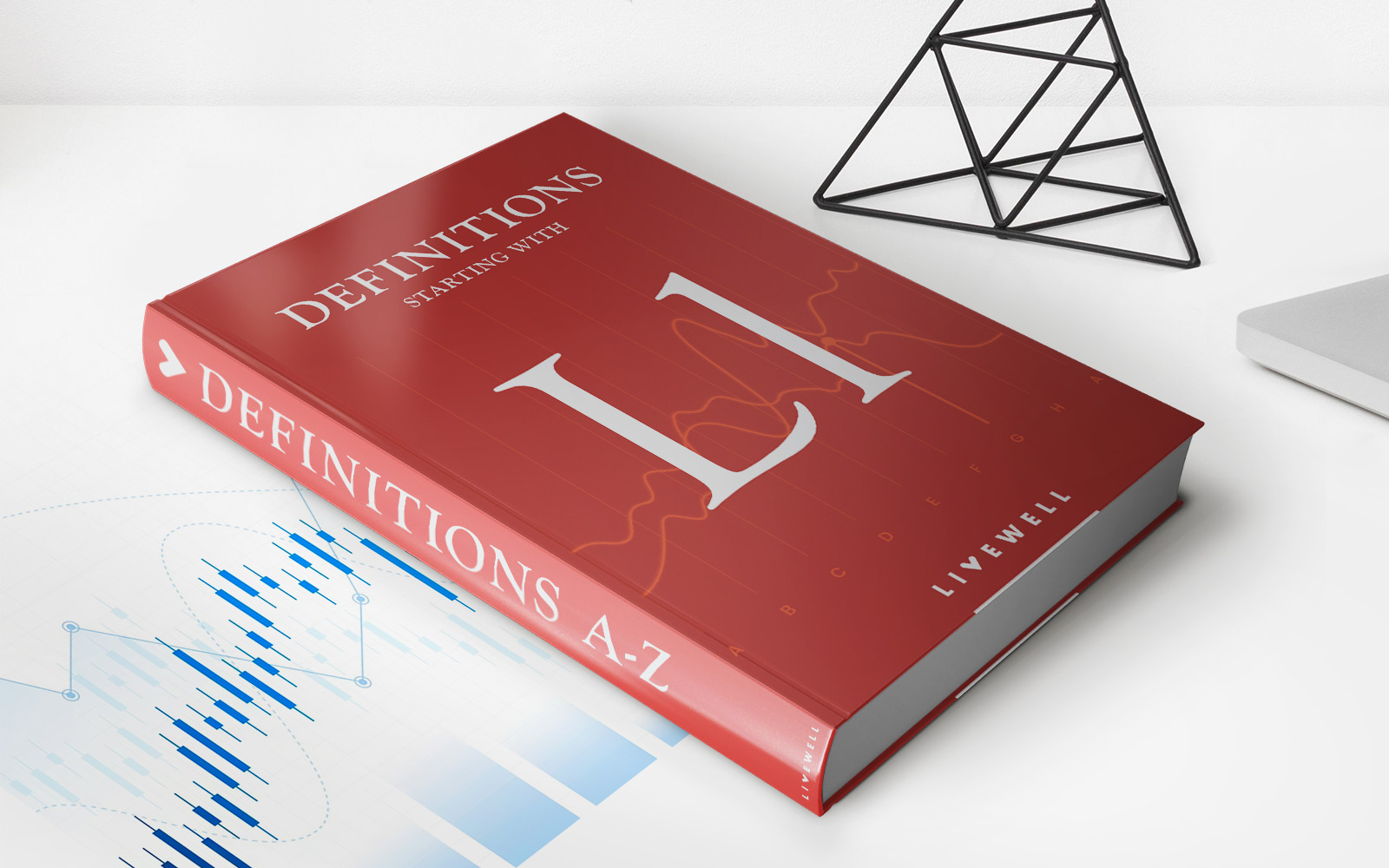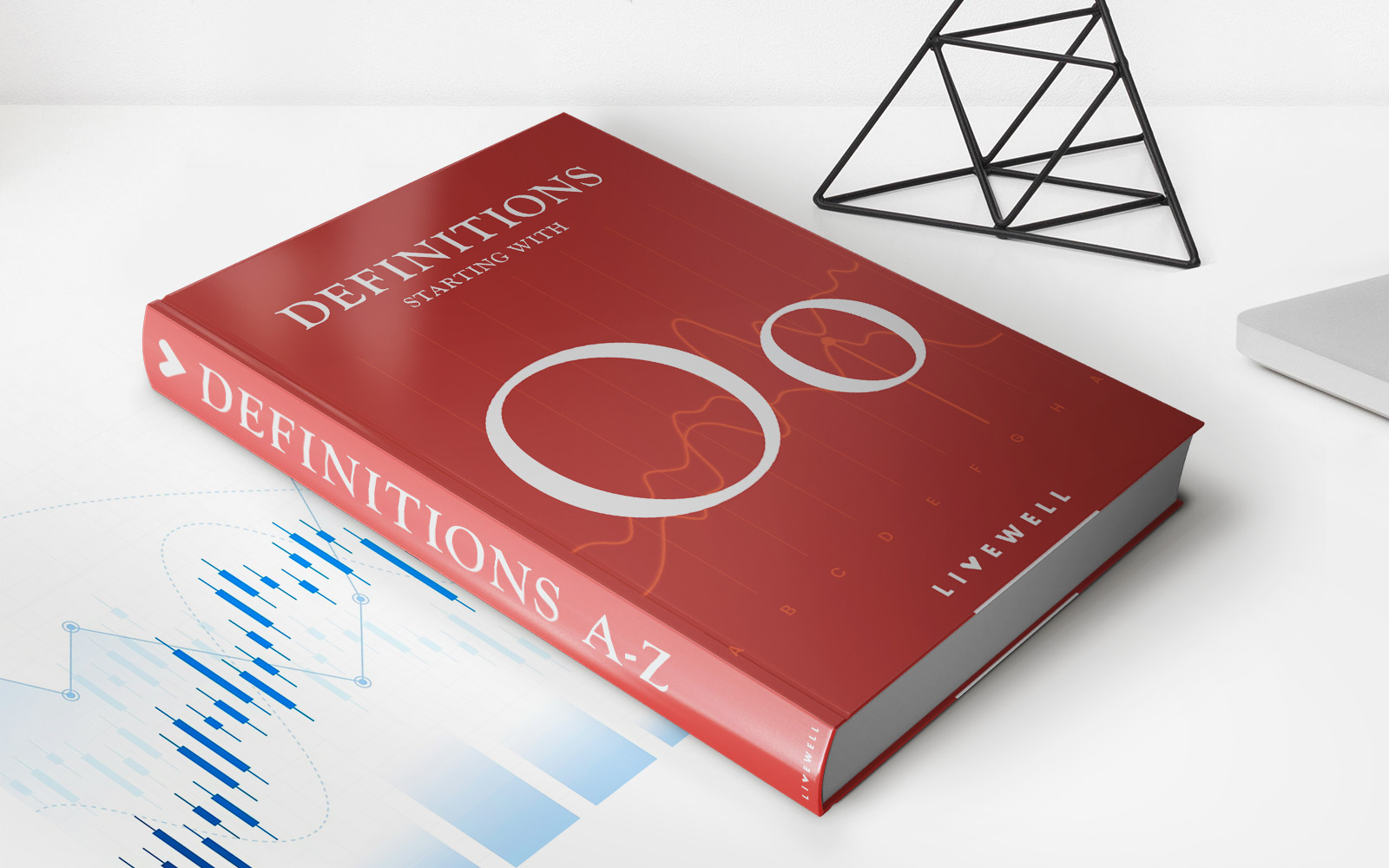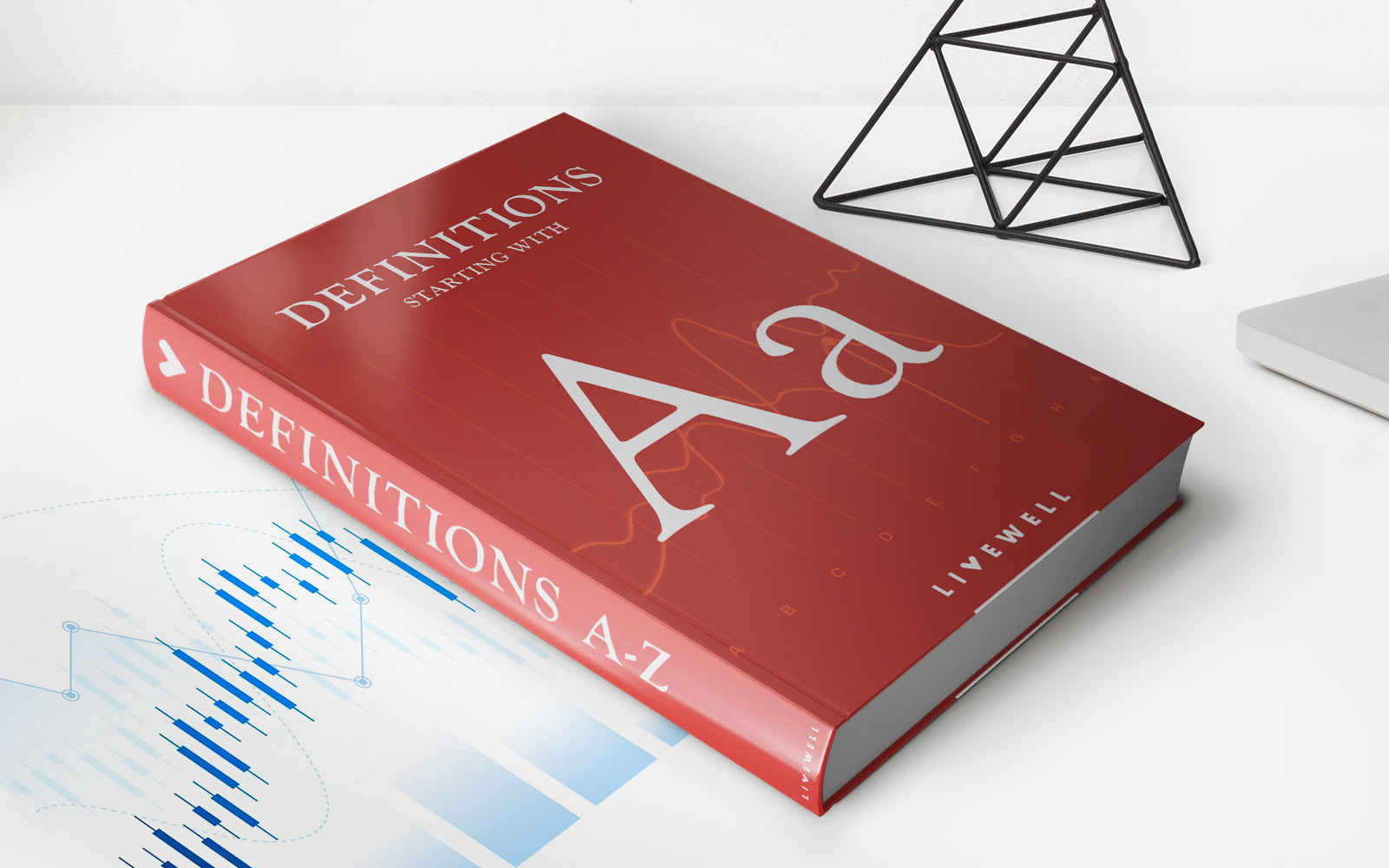

Finance
What Is A Life Insurance Illustration?
Modified: February 21, 2024
Discover the significance of life insurance illustrations in the world of finance. Gain insights on how they provide visual representations of policy details and help individuals make informed decisions.
(Many of the links in this article redirect to a specific reviewed product. Your purchase of these products through affiliate links helps to generate commission for LiveWell, at no extra cost. Learn more)
Table of Contents
- Introduction
- Definition of a Life Insurance Illustration
- Purpose of a Life Insurance Illustration
- Components of a Life Insurance Illustration
- How to Read and Interpret a Life Insurance Illustration
- Criticisms and Controversies Surrounding Life Insurance Illustrations
- Importance of Consulting a Financial Professional When Reviewing Life Insurance Illustrations
- Conclusion
Introduction
Life insurance is an essential component of a comprehensive financial plan, providing financial protection and security for loved ones in the event of the policyholder’s death. When considering a life insurance policy, it is crucial to understand the terms, benefits, and costs associated with it. This is where a life insurance illustration comes into play.
A life insurance illustration is a document provided by an insurance company that outlines the details of a specific life insurance policy. It serves as an informative tool to help individuals understand the features and projected benefits of the policy. Life insurance illustrations are commonly used during the purchasing process to evaluate different policy options and make an informed decision.
Understanding and interpreting a life insurance illustration is essential for making a well-informed decision regarding life insurance coverage. It provides prospective policyholders with a clear view of the policy’s potential benefits, premiums, cash values, and death benefits. By analyzing and comparing life insurance illustrations, individuals can assess the suitability of different policies based on their specific needs and financial goals.
In this article, we will delve into the details of a life insurance illustration, exploring its purpose, components, and how to navigate and interpret the information it presents. We will also discuss some criticisms and controversies surrounding life insurance illustrations and stress the importance of consulting a financial professional when reviewing and making decisions based on life insurance illustrations.
So, let’s dive in and explore the world of life insurance illustrations to empower ourselves with the knowledge needed to make informed choices regarding life insurance coverage.
Definition of a Life Insurance Illustration
A life insurance illustration is a detailed document provided by an insurance company that illustrates the projected benefits and costs of a specific life insurance policy. It is designed to provide prospective policyholders with a visual representation of how the policy will perform over time.
The illustration typically includes a variety of information, such as premium amounts, cash values, death benefits, and policy features. It serves as a valuable tool for individuals to understand the financial implications of purchasing a particular life insurance policy.
Life insurance illustrations are usually presented in a tabular format, with columns representing different policy years and rows representing key components of the policy. The document may include multiple scenarios, such as guaranteed and non-guaranteed values, to highlight the potential range of outcomes under different circumstances.
It’s important to note that a life insurance illustration is not a guarantee of performance but rather an estimate based on certain assumptions, such as interest rates, mortality charges, and expense loads. The actual values of the policy may differ from those shown in the illustration due to factors beyond the insurance company’s control.
Insurance companies are typically required to adhere to certain regulations and guidelines when preparing life insurance illustrations. These regulations aim to ensure that the information provided to prospective policyholders is accurate, fair, and transparent.
Overall, a life insurance illustration is an essential tool for individuals seeking to evaluate and understand the financial aspects of a life insurance policy. It provides a clear picture of the policy’s projected benefits and costs, helping individuals make informed decisions about their life insurance coverage.
Purpose of a Life Insurance Illustration
The primary purpose of a life insurance illustration is to provide prospective policyholders with a clear understanding of the financial aspects of a life insurance policy. It serves as a tool to help individuals make informed decisions about their life insurance coverage by presenting the projected benefits and costs associated with the policy.
Here are the key purposes of a life insurance illustration:
- Evaluating Policy Options: Life insurance illustrations allow individuals to compare and evaluate different policy options. By presenting detailed information about premiums, cash values, death benefits, and policy features, prospective policyholders can assess which policy aligns with their financial goals and needs.
- Understanding Cash Values and Death Benefits: Cash values and death benefits are crucial components of a life insurance policy. A life insurance illustration provides a breakdown of how these values may accumulate and change over time, giving individuals insight into the financial implications of the policy.
- Financial Planning: Life insurance is often an integral part of a comprehensive financial plan. By examining the projected benefits and costs in a life insurance illustration, individuals can evaluate how the policy fits into their overall financial strategy and work towards achieving their long-term financial goals.
- Budgeting and Affordability: The premium amount is a significant consideration for individuals when choosing a life insurance policy. A life insurance illustration provides a breakdown of the premium amounts over the policy’s duration, helping individuals budget and determine the affordability of the policy.
- Illustrating Policy Performance: Life insurance illustrations demonstrate how the policy is expected to perform over time. By including guaranteed and non-guaranteed values, individuals can evaluate the potential upside and downside of the policy’s financial outcomes.
Overall, the purpose of a life insurance illustration is to equip individuals with the necessary information to make informed decisions about their life insurance coverage. It helps individuals evaluate policy options, understand the financial aspects of the policy, and align it with their financial goals and needs.
Components of a Life Insurance Illustration
A life insurance illustration is a comprehensive document that presents various components and details of a life insurance policy. Understanding these components is crucial for interpreting the information provided and making informed decisions about life insurance coverage. Here are the key components typically found in a life insurance illustration:
- Premiums: The illustration will outline the premium amounts required to maintain the policy. It may include different premium payment options, such as monthly, quarterly, or annual payments.
- Cash Values: Cash values represent the accumulated savings within a whole life insurance policy. The illustration will show the projected growth of the cash values over time, which can be accessed via policy loans or withdrawals.
- Death Benefits: The death benefit is the amount payable to the policy’s beneficiaries upon the death of the insured. The illustration will display the projected death benefits over the policy’s duration, taking into account any changes in the policy’s cash values and potential policy riders.
- Riders: Riders are additional features or benefits that can be added to a life insurance policy. The illustration will outline any riders included in the policy and their impact on premiums, cash values, and death benefits.
- Policy Dividends: Some life insurance policies may be eligible for policy dividends, which are payments made to policyholders based on the insurer’s financial performance. The illustration will indicate if dividends are included and provide projections of their potential values.
- Interest Rates: The illustration will specify the interest rates used in the calculations, as they can have a significant impact on the policy’s cash values and performance. It’s crucial to understand whether the interest rates are guaranteed or non-guaranteed.
- Illustration Duration: The illustration will specify the duration for which the projections are presented. It allows policyholders to evaluate the long-term performance of the policy based on different scenarios.
It’s important to note that the components presented in a life insurance illustration may vary slightly depending on the type of life insurance policy and the specific features offered by the insurance company. It’s essential to review and understand each component in the context of the specific policy being considered.
By understanding the various components of a life insurance illustration, individuals can gain a comprehensive view of the policy’s projected benefits and costs. This knowledge enables them to make informed decisions about their life insurance coverage based on their financial goals and needs.
How to Read and Interpret a Life Insurance Illustration
Reading and interpreting a life insurance illustration can seem overwhelming due to the abundance of information presented. However, with some guidance, you can effectively analyze the illustration and make informed decisions about your life insurance coverage. Here are some key steps to help you read and interpret a life insurance illustration:
- Understand the Components: Familiarize yourself with the various components of the illustration, such as premiums, cash values, death benefits, and riders. Ensure you understand what each component represents and how it contributes to the overall policy.
- Review the Assumptions: Take note of the assumptions made in the illustration, such as interest rates and mortality charges. Understanding these assumptions will help you gauge the accuracy and reliability of the projections presented.
- Identify Guaranteed vs. Non-Guaranteed Values: Differentiate between guaranteed and non-guaranteed values in the illustration. Guaranteed values are those that the insurance company commits to provide, while non-guaranteed values are projections based on certain assumptions. Be aware that non-guaranteed values are subject to change.
- Consider the Duration: Take note of the duration for which the illustration is presented. Consider how the policy’s values and benefits may change over time and whether they align with your long-term financial goals.
- Compare Multiple Illustrations: If you’re evaluating different policy options, request and review illustrations for each option. Comparing the projections side by side will help you assess which policy best meets your needs and offers the most favorable financial outcomes.
- Ask Questions: If something is unclear or if you need further clarification, don’t hesitate to reach out to the insurance company or a financial professional. They can provide valuable insights and guide you through the intricacies of the illustration.
- Consider the Big Picture: Remember that a life insurance illustration is just a projection based on certain assumptions. It’s essential to consider the illustration in the context of your overall financial plan, taking into account factors such as your income, expenses, assets, and other financial goals.
By following these steps, you can better navigate and interpret a life insurance illustration. It will empower you to make informed decisions about your life insurance coverage based on a thorough understanding of the information presented and how it aligns with your financial goals.
Criticisms and Controversies Surrounding Life Insurance Illustrations
While life insurance illustrations serve as informative tools, they have also faced criticism and controversies. It’s important to be aware of these concerns when reviewing and relying on the information provided in a life insurance illustration. Here are some key criticisms and controversies surrounding life insurance illustrations:
- Potential for Misleading Projections: Life insurance illustrations often include non-guaranteed projections based on assumptions such as interest rates and mortality charges. Critics argue that these projections can be misleading, as actual performance may not align with the illustrated values. It’s important to view the illustration as an estimate, not a guarantee.
- Complexity and Information Overload: Life insurance illustrations can be complex and overwhelming, with numerous columns, rows, and calculations. Critics argue that this complexity can make it difficult for individuals to accurately understand and interpret the information provided. Simplifying the presentation of illustrations could help address this concern.
- Assumption Sensitivity: Life insurance illustrations heavily rely on assumptions about interest rates, mortality charges, and expenses. Critics argue that small variations in these assumptions can significantly impact the projected values, potentially misleading policyholders. It’s important to scrutinize the assumptions and consider their potential impact on the policy’s performance.
- Lack of Comparative Illustrations: Critics contend that the absence of standardized comparative illustrations makes it challenging for individuals to effectively compare different life insurance policies. The lack of consistent formats and terminology across insurers can hinder policyholders’ ability to make informed decisions based on accurate comparisons.
- Focus on Cash Values: Some critics argue that life insurance illustrations often place excessive emphasis on cash values, potentially overshadowing other crucial policy components such as death benefits and the overall purpose of life insurance coverage. This emphasis can lead individuals to prioritize policies with higher cash values without fully considering their long-term financial needs.
- Inadequate Communication and Education: Critics argue that insurance companies have a responsibility to effectively communicate and educate policyholders about the limitations and risks associated with life insurance illustrations. Greater transparency and clearer explanations of the assumptions and uncertainties behind the illustrations can help address this concern.
It’s important for individuals reviewing a life insurance illustration to approach it with a critical mindset and seek guidance from financial professionals. They can provide further insights into the potential limitations and risks associated with the illustrations, helping individuals make informed decisions based on a more comprehensive understanding.
Importance of Consulting a Financial Professional When Reviewing Life Insurance Illustrations
When reviewing life insurance illustrations, it is essential to consult a financial professional who has expertise in insurance and financial planning. Their knowledge and guidance can help you navigate the complexities of the illustrations and make well-informed decisions about your life insurance coverage. Here are several reasons why consulting a financial professional is crucial when reviewing life insurance illustrations:
- Expertise and Understanding: Financial professionals have a deep understanding of life insurance policies, including the intricacies of their illustrations. They can explain the components, projections, and assumptions in simple terms, helping you comprehend the information presented.
- Objective Advice: A financial professional can provide unbiased advice and recommendations based on your unique financial situation, goals, and needs. They will consider factors beyond the illustration, such as your overall financial plan, risk tolerance, and long-term objectives, to ensure the life insurance policy aligns with your broader financial strategy.
- Comparative Analysis: By consulting a financial professional, you can benefit from their ability to analyze and compare multiple life insurance illustrations from various insurers. They can help you identify the strengths and weaknesses of different policies, enabling you to make a well-informed decision that suits your financial objectives.
- Risk Assessment: A financial professional can help you assess the risks associated with the assumptions made in the life insurance illustration. They can evaluate the sensitivity of the projections to changes in interest rates, expenses, and mortality charges, providing you with a more comprehensive understanding of the potential outcomes.
- Customized Recommendations: Every individual has unique financial circumstances and goals. A financial professional can tailor their recommendations based on your specific situation. They can help you select a life insurance policy that fits your budget, risk tolerance, and desired level of coverage, considering other existing policies and investments you may have.
- Long-term Relationship: Consulting a financial professional establishes a long-term relationship that goes beyond reviewing a single life insurance illustration. They can provide ongoing financial advice, monitor changes in your circumstances, and help you adjust your life insurance coverage as needed to ensure it remains aligned with your evolving needs.
Life insurance is a significant financial commitment, and the information presented in an illustration may not capture all the nuances of a policy. By working with a financial professional, you can gain a comprehensive understanding of the illustration’s implications, mitigate potential risks, and make confident decisions regarding your life insurance coverage.
Remember, a financial professional brings knowledge and expertise to the table, helping you navigate the complexities of life insurance and ensuring that your coverage supports your broader financial goals.
Conclusion
Life insurance illustrations play a crucial role in helping individuals understand and evaluate various life insurance policies. By providing projected benefits, premiums, and other important details, these illustrations assist individuals in making informed decisions about their life insurance coverage.
While life insurance illustrations are valuable tools, it is important to approach them with caution and seek guidance from financial professionals. These professionals can help navigate the complexities of the illustrations, provide personalized advice, and ensure that the chosen policy aligns with an individual’s specific financial goals and needs.
When reviewing a life insurance illustration, it is essential to understand the components, consider the assumptions made, and differentiate between guaranteed and non-guaranteed values. Comparing multiple illustrations and asking questions can also enhance understanding and facilitate decision-making.
It is also important to be aware of the criticisms and controversies surrounding life insurance illustrations. Concerns such as potential misleading projections, complexity, and assumption sensitivity underline the need for a critical mindset and consultation with financial professionals.
In conclusion, life insurance illustrations are valuable tools for understanding the financial implications of life insurance policies. However, they should be viewed as estimates rather than guarantees. Consulting a financial professional helps individuals navigate the intricacies of these illustrations, gain a comprehensive understanding of their implications, and make well-informed decisions about their life insurance coverage.
Ultimately, by leveraging the information provided in life insurance illustrations and seeking expert guidance, individuals can secure the most suitable life insurance coverage to protect their loved ones and achieve their long-term financial goals.














